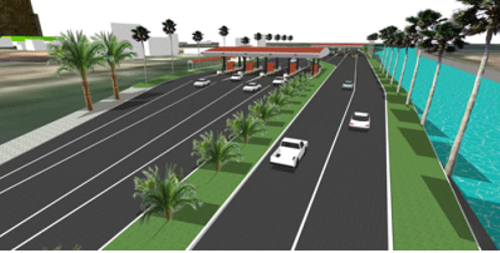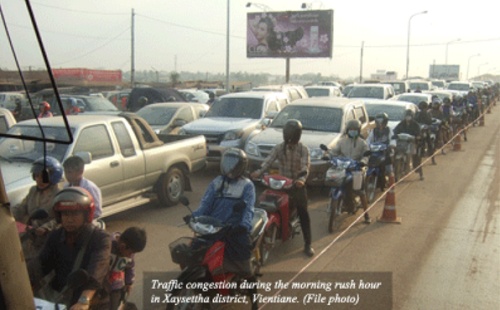Govt Gives Green Light To Vientiane Expressway
Source: Vientiane Times
The government has agreed in principle to a plan to build a 14-km expressway linking Vientiane city centre to the outskirts in Xaythany district, in a bid to ease congestion.
The project was agreed to at the government’s monthly meeting for February held last week at the Prime Minister’s Office when the concept of the multimillion US dollar project was presented and discussed, government spokesman Prof. Dr Chaleun Yiapaoher told a press conference held shortly after the two-day meeting.
The six-lane expressway, with a planned width of 70 metres, will be built parallel to Kaysone Phomvihane Road and will run from the Lao International Trade Exhibition and Convention Centre (Lao-ITECC) in Xaysettha district to Dongmakkhai village in Xaythany district.
“In principle, the government agrees to build the expressway,” Prof. Dr Chaleun said.
But the government had told the relevant departments to carry out a thorough study and analysis to ensure its effectiveness as the project would require considerable investment and involve certain technical standards.
Compensation will be provided to families who have to relocate to make way for the expressway.
Once the study and analysis are complete, details of the project will be considered and approved before it can be implemented, the spokesman said.
The meeting also asked the relevant authorities to look into methods of investment for the project, which is estimated to cost between US$150 million and US$200 million.
The cabinet discussion and approval came after the Vientiane People’s Council recently approved a proposal for the expressway.
An official in charge of the project, Dr Bouavone Souklasaeng, told the Vientiane Times yesterday that the road corridor is designed to avoid densely populated communities to minimise impacts.
She added that although the expressway will be built parallel to Kaysone Phomvihane Road, the two roads will not be close to each other so that properties like buildings, shops and other business premises along Kaysone Phomvihane Road will not be impacted.
About 87 houses will be affected while the remaining area the new expressway will pass through is farmland.
It is recommended that investment for the project take the form of a Public Private Partnership, which in this case comprises two options.
The first option would see the state provide 70 percent of the funding and the private sector 30 percent. Another option is for the state to contribute 60 percent of the cost and the private sector 30 percent, while local people whose properties are affected would contribute 10 percent by giving up their land, according to Dr Bouavone.
Under the second option, people affected would receive a dividend from the project each year.
Over the 14 kilometres of its length, the expressway will link with several key roads including Road No. 13 and the 450 Year Road. It will also link to the planned Laos-China railway when it is built.
The expressway will be a toll road in which users will be required to pay to use it, with one car expected to pay about 5,000 kip per trip.


